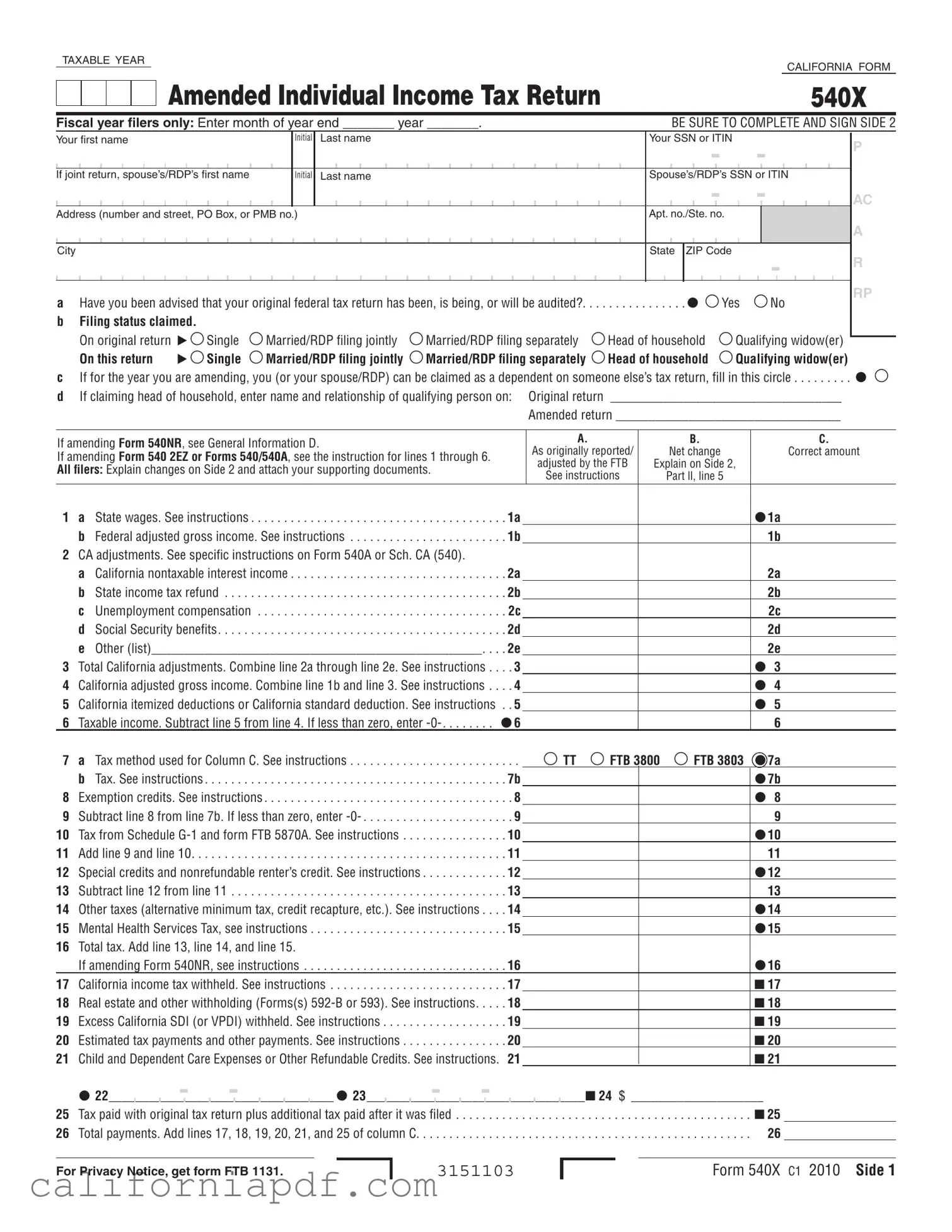The California Form 540X is designed for taxpayers needing to amend previously filed state income tax returns. This process aligns closely with the purpose of the federal Form 1040X, which serves a similar function at the national level. Both forms allow individuals to correct errors, claim a more favorable filing status, or adjust their income, deductions, and credits after the original submission. The main difference lies in their jurisdiction, one targeting California state taxes and the other federal taxes, but their core function of facilitating post-filing adjustments remains the same.
Similar to the California Form 540X, the IRS Schedule C (Form 1040) also involves reporting financial details, but specifically focuses on profit or loss from business activities. Schedule C is for sole proprietors to detail business income and expenses. While Form 540X amends previously filed information, Schedule C may be among the documents amended if initial reporting was inaccurate. Both forms deal with the adjustment of previously reported financial figures, though they cater to different types of income and corrections.
The IRS Form 8862 is another document with a revision-related purpose, used to reclaim eligibility for certain credits after disallowance in previous years. If a taxpayer's claim for the Earned Income Tax Credit (EITC) is denied, they must file Form 8862 to requalify in future tax years. This mirrors the corrective nature of Form 540X, albeit with a focus on specific tax credits at the federal level. Each form plays a pivotal role in ensuring taxpayers can rectify or update their tax filings to accurately reflect their financial situations.
Form 2555, used by taxpayers to claim the Foreign Earned Income Exclusion, shares similarities with Form 540X in that it could lead to an amendment. If an individual initially fails to claim the exclusion and realizes this omission could reduce their taxable income, they may file Form 540X to rectify the oversight. While Form 2555 directly claims a specific tax benefit for international income, Form 540X serves as the mechanism for correcting the state tax return to include such federal adjustments.
California's Form 3500, the Exemption Application, is geared towards organizations seeking state tax-exempt status. Like Form 540X, it involves a detailed application process but serves a different audience. Whereas Form 540X amends personal income tax returns, Form 3500 is exclusively for entities proving eligibility for tax exemption. Both forms require substantial documentation and careful reporting of financial details to meet state tax regulations.
The IRS Form 8822, Change of Address, although not amending tax figures directly, is vital for maintaining accurate taxpayer records, similar to the role of Form 540X in ensuring correct tax information. When taxpayers relocate, submitting Form 8822 promptly ensures they receive any refunds or correspondence, avoiding complications that could necessitate amendments with Form 540X. Both forms help keep taxpayer information current, though they serve different administrative functions.
Another related document, the IRS Form 9465, Installment Agreement Request, like Form 540X, addresses taxpayers' needs to manage their tax obligations more effectively. If unable to pay the full amount due with Form 540X amendments, taxpayers might need to establish a payment plan, paralleling Form 9465’s purpose at the federal level. Each form provides a structured way to address or rectify tax liabilities, acknowledging financial realities taxpayers face.
The California Form 593, Real Estate Withholding Tax Statement, is indirectly related to the 540X as it involves state tax implications of selling real property. Incorrect or omitted information on Form 593 could result in the need to file Form 540X to amend a tax return. Both forms play crucial roles in the context of real estate transactions and their impact on individual state tax obligations.
Form 540ES, the Estimated Tax for Individuals, and Form 540X are connected through the adjustment of taxpayers' estimated tax payments. Should initial estimates prove inaccurate, leading to overpayment or underpayment of taxes, Form 540X could be utilized to correct the discrepancy on a filed return. While Form 540ES focuses on prospective tax payments based on estimated income, Form 540X allows for retrospective corrections.
Lastly, Form 540NR, Nonresident or Part-Year Resident Tax Return, is directly amendable by Form 540X if errors are found or financial circumstances change after filing. Both forms cater to individuals with specific residency statuses concerning California state taxes but serve different functions—one for the initial reporting and the other for necessary amendments afterward.


